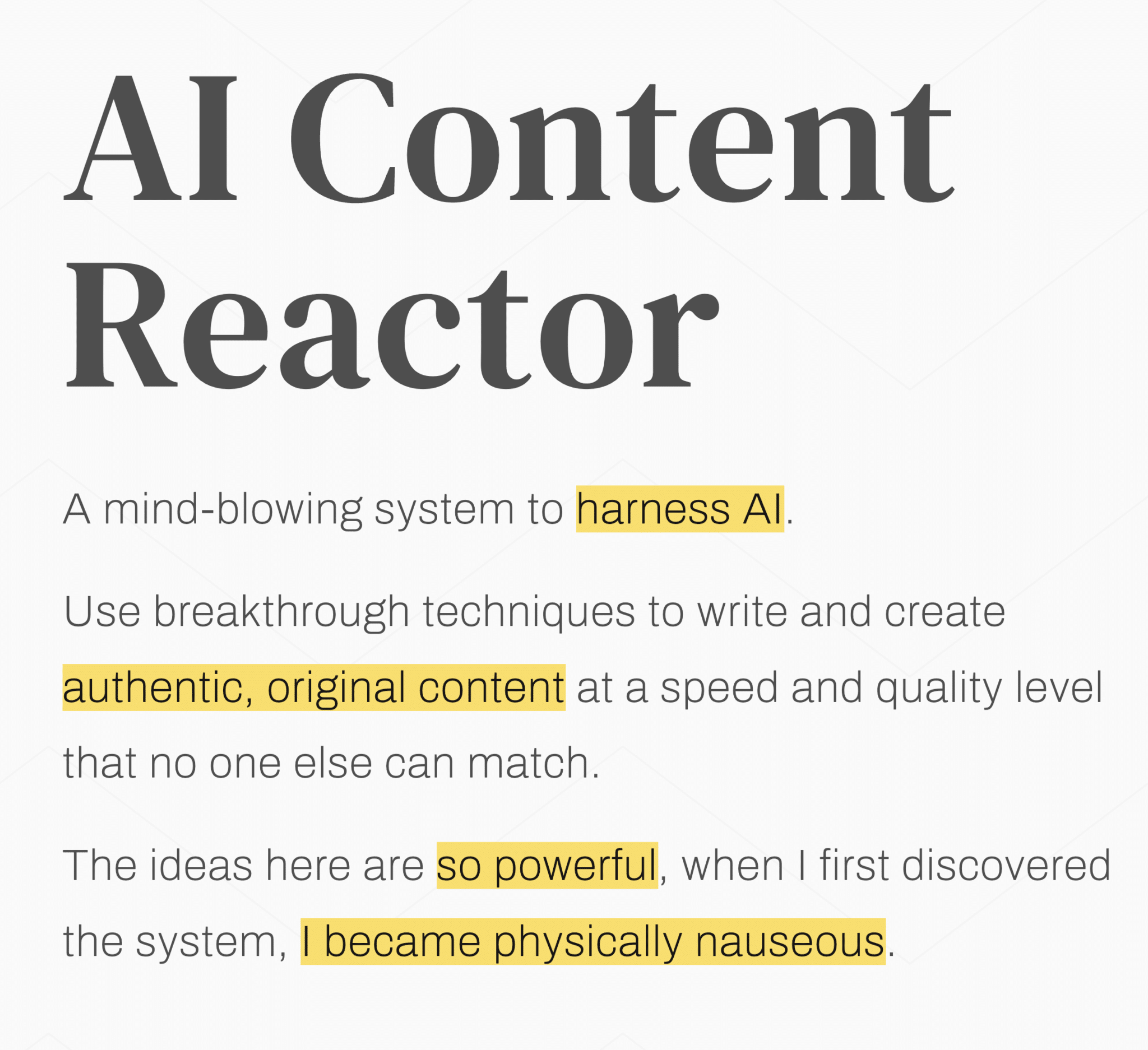When we talk about persuasion tactics, we can’t leave out social proof. Social proof is a principle that has become critical in successful marketing strategies. One of the seven foundational principles of persuasion identified by Dr. Robert Cialdini, social has a powerful influence on how people make decisions.
In digital marketing, we build social proof around a brand to influence spending. We use real-world examples like influencer endorsements, customer reviews, user-generated content, and social media buzz.
From the credibility boost of a five-star rating to the authority lent by an industry expert’s endorsement, understanding the different forms of social proof can change how you build trust, engage audiences, and drive conversions.
Table of contents
- What is social proof?
- Why does social proof matter in digital marketing?
- Case Study: Amazon is a masterclass in using social proof to drive conversions.
- What is the neuroscience behind social proof?
- How do you translate the neuroscience of social proof into digital signals?
- Here’s how to effectively use social proof across your marketing.
- Measure the impact of social proof.
- Merging neuroscience with digital marketing provides maximum impact.
What is social proof?
The concept of social proof was first developed in the 1930s by social psychologist Muzafer Sherif. His studies demonstrated how group consensus could heavily influence individuals’ perceptions and judgments in uncertain situations. These studies laid the groundwork for our modern understanding of social influence.
A type of social influence, social proof is a powerful psychological phenomenon that significantly influences how we purchase online. There is a basic human tendency to follow the actions of others when making a decision, especially if we’re not sure of the proper course of action. Social proof assumes the actions of others reflect the correct behavior.
For example, you’re looking at a menu in a restaurant. Everything looks good, but you’re having a hard time making a decision. If you’ve ever looked around at what other people have ordered, you’ve looked for social proof. This tendency to seek social proof is often described as “herd mentality” and can strongly impact our digital shopping habits.
Why does social proof matter in digital marketing?
Our world is overflowing with options, especially online. Uncertainty is the norm rather than the exception.
Social proof matters in digital marketing because it reduces friction, builds trust, and creates emotional alignment between the buyer and the brand. People rarely make decisions in isolation, whether choosing a new app, a skincare product, or a contractor. We look for signals to validate that we’re making the right choice, and that’s where social proof really shines.
Let’s break down the top reasons why it works so effectively:
It helps people navigate uncertainty.
When we aren’t sure what to do, we take cues from others. That’s why reviews, social shares, “bestseller” tags, and user-generated content are so powerful. They offer reassurance in moments of hesitation. We’ll get into real-world examples in just a moment.
It taps into our need to belong.
We’re hardwired for community. Deep down, we’re social creatures with a need to belong. We want to feel part of a group, especially one that seems confident, happy, or successful. Social proof is an emotional connection that subtly says, “You belong here, too.”
This drive for social acceptance often leads people to make choices that fit their peer group. It also turns buyers into brand advocates. When we purchase through social proof, we also buy the experience of fitting in.
Marketing for luxury brands is an excellent example of brand advocacy and peer behavior. Think of luxury handbags, designer sneakers, or tech upgrades. Many of these purchases are driven by social proof as much as personal preference.
It amplifies perceived expertise.
One of the ways social proof works is through perception. In other words, we perceive the people we’re following have more knowledge or insight than we do.
For example, if a product has thousands of positive reviews, potential buyers are more likely to assume it’s a reliable choice. When someone with authority (an influencer, expert, or large group of users) endorses a brand, we’re more likely to trust it. Why? Because our brains interpret that endorsement as a shortcut to making the “right” decision.
Case Study: Amazon is a masterclass in using social proof to drive conversions.
Social proof appears in many forms throughout the online shopping experience. Each one builds trust in a different way, whether through popularity, peer validation, or expert endorsement. Let’s look at the most common types of social proof, why they work, and how brands like Amazon have turned them into powerful conversion tools.
Customer reviews and star ratings
Reviews and ratings are often the first things shoppers look for. They’re the digital equivalent of word-of-mouth marketing. Shoppers instinctively seek them out because they reduce uncertainty, highlight pros and cons, and offer proof that the product has worked for someone else.
Amazon showcases average star ratings and total review counts at the top of every product page. Verified buyer reviews are sorted by relevance, recency, or helpfulness, giving customers a sense of transparency and trust.

User-generated content (UGC)
Photos, videos, or social posts from real customers using your product boost trust and credibility. It’s no longer just your brand saying, “Trust us.” It’s real people sharing their experiences, and that matters more than polished ad copy ever could.
Amazon encourages buyers to upload photos and videos of their purchases. These visuals from real people give potential buyers the chance to see the product in real-world settings. We get to see that it’s being used and loved (or not). They go a long way in enhancing credibility beyond the product description and five-star reviews.

“Bestseller” and “most popular” labels
These tags tap into herd behavior. By signaling that a product is already trusted by many, you shortcut the buyer’s need to research every detail. It becomes a safer bet that others have already taken.
One of Amazon’s versions is the “Amazon’s Choice” label. When the options are overwhelming, we can look at “Best Seller” or “Amazon’s Choice” labels as subtle trust signals. These badges act as shortcuts for uncertain shoppers. They imply popularity and trust without requiring the customer to dig through comparisons.

Celebrity and influencer endorsements
When we admire or trust a public figure, we’re more inclined to try what that person recommends. An influencer’s approval can directly transfer credibility and emotional appeal to your brand.
Amazon doesn’t traditionally rely on celebrity endorsements across the board. However, it does have dedicated influencer storefronts where content creators can recommend their favorite products.
These curated pages blend social trust with convenience. They help increase UCG on each product page and answer many of the questions a potential buyer might ask. Fans of these influencers can also shop directly from their favorite influencers’ picks.

Social media engagement
High numbers of likes, shares, comments, or followers send a signal: This brand is active, visible, and liked by many. For consumers on the fence, this visible popularity can tip the scale toward conversion.
Amazon could benefit from making it easier to share a product on social media. However, what they do instead is offer Q&A from real customers (and now AI) who answer product questions in real time. This is peer-to-peer support and mimics the reassurance of asking a friend before buying.

Amazon builds its entire user experience around social proof.
By embedding trust signals at every stage of the buyer journey, Amazon has turned social validation into a growth engine. The company provides maximum options but reduces decision fatigue with tiny votes of confidence.
Amazon’s real genius lies not in using one type of social proof but in stacking them. Each element builds on the last, creating a frictionless path from interest to trust to purchase. And that’s what makes its model so powerful.
What is the neuroscience behind social proof?
All of these examples—from Amazon’s review system to UGC and influencer buzz—work because they tap into something deeper than logic. They work because our brains are wired to respond to them. Let’s look at the neuroscience behind social proof and why it’s such a powerful tool in digital marketing.
Modern brain imaging studies are fantastic. By observing which regions of the brain are activated when we’re exposed to social proof, we can begin to understand why we behave the way we do.
There are several key regions:
Amygdala
The amygdala processes emotions and social cues. It helps us make snap judgments about people, situations, and emotional tone. When we see hundreds of positive reviews or watch someone we admire recommend a product, this part of the brain reacts quickly. The reaction gives us a sense of emotional safety in following the crowd. It’s part of what makes social proof feel reassuring, even if we don’t realize why we’re drawn to it.
Ventral Striatum
As part of the brain’s reward system, this area lights up when we expect something good to happen. When we receive positive feedback or see others engaging in desirable behavior, it reinforces our decision to follow suit. In a way, it gives us a small hit of satisfaction just from the idea of joining in with others’ successful choices.
Medial Prefrontal Cortex (mPFC)
The mPFC plays a major role in how we understand people’s thoughts, motivations, and intentions. When we read testimonials or watch influencer content, this part of the brain helps us “put ourselves in their shoes” and imagine what it would be like to have that same experience. It’s part of why personal stories and user experiences feel so persuasive. They help us mentally try the product before ever clicking “buy.”
Social Cognitive Network
This network is actually a team of regions that work together to read social situations. It includes the mPFC, anterior temporal lobes, and parts of the parietal cortex, which process complex social information.
These areas help us pick up on group behavior and decide how we should respond. In the context of marketing, this network helps translate signals like popularity, engagement, and endorsement into decisions about trust and action.
How do you translate the neuroscience of social proof into digital signals?
When it comes to leveraging social proof effectively, Amazon shows us what good looks like in action, but what about a measurable, digital format? It’s powerful, but social proof only works if your audience can see it. That means turning trust into tangible, visible signals across your website, content, and marketing channels.
Let me quickly relist the signals Amazon uses, as well as a few more that they don’t use:
- Reviews & Ratings: 4.8 stars from 2,140 customers? That number does more than your product description ever could.
- User-Generated Content: Real people tagging your brand, posting photos, or sharing stories = credibility on display.
- “Best Seller” and “Trending” Labels: These shortcut decision-making and reduce the anxiety of choice overload.
- Influencer Shoutouts or Expert Mentions: When someone respected recommends your product, it acts like a transferred vote of confidence.
- Follower Counts & Engagement: High levels of activity on your posts or pages signal popularity and relevance.
- Social Share Counts: If hundreds or thousands of people are sharing your content, it’s a clear sign your message resonates.
- Case Studies & Testimonials: Not just reviews, but stories with context. What problem they had, how your brand helped, and what changed.
As you implement these social proof tactics, remember that the reasons are simple.
- They build familiarity. Seeing others like a product helps buyers imagine themselves using it.
- They reduce risk. If thousands of people trust you, there’s less fear in following suit.
- They engage emotional reasoning. A glowing story or a heartfelt comment taps reaches deeper than logic. It’s the subtle, often unconscious desire to align ourselves with others we respect or relate to.
The more consistently these signals show up across your channels, the stronger the persuasive effect.
This emotional validation also becomes a digital signal when it turns into social media proof such as a share, a like, or a glowing review. This type of content creation is the digital equivalent of a nod of approval, a small, but impactful moment that can tip the scales toward conversion.
Here’s how to effectively use social proof across your marketing.
Now that we know what digital signals look like, let’s talk about how to use them strategically across your website, email, and social channels. It’s not just about having social proof. You have to place it where it nudges decisions.
Homepage & product pages:
- Feature your highest-rated products front and center.
- Use scrolling testimonials or “As seen in” logos as credibility boosters.
- Highlight review counts, customer photos, and trust badges above the fold.
Checkout pages:
- Add mini testimonials or a review summary near the “Buy” button.
- Display real-time purchase pop-ups (“Alex from Austin just bought…”) to create a sense of momentum.
In your email marketing:
- Include a testimonial or success story in your welcome series to establish trust early.
- Add star ratings or review quotes in product recommendation emails.
- Use social proof in abandoned cart emails (“This product has 4.9 stars and 2,000+ happy customers”).
On social media:
- Repost UGC (with permission) regularly to keep your feed grounded in authenticity.
- Highlight customer shoutouts, tags, and transformations in Stories and reels.
- Use carousel posts or “before/after” stories to showcase real results from real people.
- Share screenshots of reviews or DMs as proof of customer satisfaction.
In advertising:
- Run A/B tests with and without social proof elements (testimonials, influencer clips, badges).
- Use quote overlays from happy customers as ad hooks.
- Segment ad audiences by behavior (e.g., cart abandoners) and use high-trust messages to close the loop.
Bonus: Social proof in unexpected places
To stand out, add subtle but powerful proof in places people don’t expect it:
- Search results: Use review schema to pull star ratings into your organic listings.
- Live chat popups: “Need help? 98% of customers found our team helpful.”
- FAQ pages: Add customer quotes alongside answers (“I had the same question before ordering!”).
- Packaging inserts: Include QR codes to UGC campaigns or “Thank you” pages featuring happy customers.
You don’t need a massive following or celebrity endorsement to use social proof effectively. What matters is showing that real people trust you and here’s the proof. When you surface those signals in the right places, you shift the conversation from “Should I trust this?” to “Other people already do, why wouldn’t I?”
Measure the impact of social proof.
To fully leverage social proof, track the impact of these digital signals. Use analytics tools to measure:
- Conversion rates from landing pages with testimonials.
- Engagement rates on social media posts featuring customer stories.
- Click-through rates (CTR) for pages with case studies and reviews.
- Brand sentiment through social listening tools to gauge overall trust levels.
Merging neuroscience with digital marketing provides maximum impact.
Understanding the neuroscience behind social proof allows digital marketers to craft campaigns that tap into deeply ingrained human behaviors. When you integrate emotional triggers with social signals, you can effectively harness the power of social proof to drive conversions and build lasting customer relationships.
Whether you’re creating a social media platform strategy, building brand awareness, or guiding a target audience through a purchasing decision, social proof should be one of the principles at the core of your marketing campaigns. From blog posts to social media content, every touchpoint is an opportunity to show the impact of real customer experiences. Remember, the brain craves social validation.
Make it easy for your audience to see the positive actions of others, and you’ll create a powerful, persuasive marketing experience that turns interest into loyalty.



































